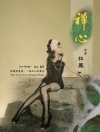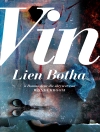Presenting the fundamentals of manga editing and how to work with translated text in the context of a visual medium, including steps within manga workflows, common manga standards, advice about seeking manga jobs, manga-specific concepts and terminology, style guidelines that differ from prose and Chicago style, and visual aspects of manga that need to be taken into account along with the textual elements.
With 20 figures and two detailed translation tables, a huge amount of information is packed into this small booklet.
Author Jan Mitsuko Cash is a member of the Editorial Freelancers Association and a translator of Japanese fiction who has helped bring over a hundred volumes of Japanese novels and manga into English and has assisted others with starting their careers in the localization industry.
Manga are simply comics that originate from Japan. They are not limited by genre, target audience, or art style, though most manga are printed in black and white. While Western comics tend to be created by a team of people who each fulfill separate roles to write, draw, letter, and color a single comic, manga are usually credited to a single creator or a writer-artist duo who may employ a small team of uncredited assistant artists for help. Manga turnarounds are often very quick, but they are serialized a chapter at a time, similar to Western comics.
The publication process also differs from Western releases: instead of publishing each chapter as a standalone booklet, single chapters of multiple manga series are bundled together into magazines targeted toward a demographic. Production is weekly or monthly for many of the larger magazines, and most manga are printed solely in black and white or with a limited number of color pages. Once enough chapters of a series have been published through serialization, they are collected and published as a print volume called a tankobon (often called tanko or tanks by English publishers).
New editors will sometimes fall into the trap of only focusing on the text, but the true heart of manga is in the art! Keep the Japanese version of the manga open when looking at a script, and look out for missing translations, which are more common than you might expect.
Everything an aspiring manga editor needs to know is presented concisely and with supporting images in Editing Manga: Working with Translations in a Visual Medium by Jan Mitsuko Cash.
قائمة المحتويات
What Is Manga? 3
The Manga Workflow: Steps by Role 5
Licensing 5
Translation 5
Adaptation 6
Lettering 6
Copyediting 6
Proofreading 6
The Anatomy of a Manga 8
Page Layout 8
What Are Balloons or Bubbles? 8
Manga Fonts 11
Scripting Your Way to Success 13
Common Comic Convention Deviations 15
Numbers 15
Midword Breaks 16
Crossbar I Versus Slash I: Getting Personal 16
Punctuation Oddities: Commas, Quotation Marks, and Ending Punctuation 17iv
Working in Translation 20
Grammatical Considerations 20
Stiltedness 21
Japanese Literacy: How Much Does an Editor Need to Know? 22
Characterization 22
Honorifics 22
Glossaries, Series Bibles, Term Lists, Oh My! 23
Translation Notes 23
Working with Letterers 24
Sound Effects 25
Subtitling 26
Replacement 26
Rules of Thumb for Editing Sound Effects 27
Print Layout 29
AI, Machine Translation, and Automated Systems 31
Proofreading Tips and Tricks 32
Duplicated Text 32
Formatting Issues 32
Text Doesn’t Match the Art 32
Misattributed Speaker 33
Breaking Balloon boundaries 33
Kerning Issues 34
Finding Work 35
Appendix A: Hiragana, Katakana, and Kanji 36
Furigana and Ruby 37
Hiragana and Katakana Lookup Tables 37
Enabling IME for Text Input 39v
Appendix B: Other Resources 41
Hiragana and Katakana 41
Lettering References 42
Comic and Manga Fonts 43
Other Tools and References 43
Job Listings and Publisher Lists 44
Groups and Social Media 44
Further Reading and Watching 45
Acknowledgments 46
Author Bio 47
عن المؤلف
Robin Martin is a freelance editor, content creator, copyeditor, project coordinator, coach, and editorial guide. She serves on the Board of Governors of the Editorial Freelancers Association as the Chairperson of the Publications Committee.












